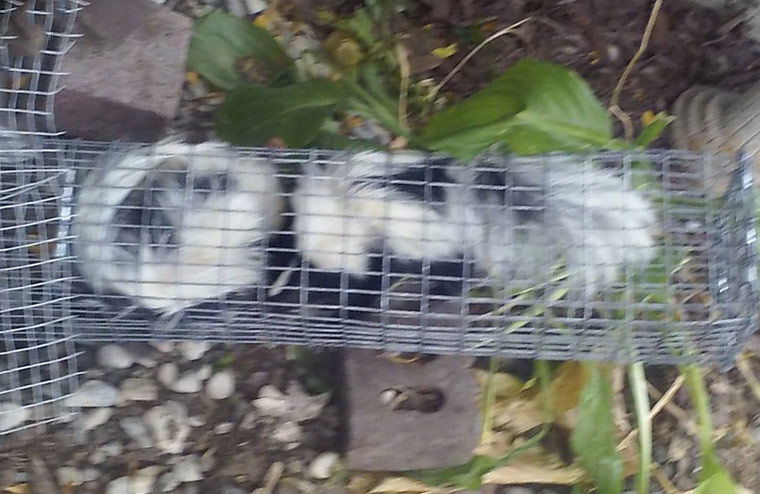-
info@aaanimalcontrol.com
Call us for help in your town
Humane Wildlife Education
Things to know about one way exclusion doors
Need wildlife removal in your hometown? We service over 500 USA locations! Click here to hire us in your town and check prices - updated for year 2020.
There are certain times and scenarios when regular traps — catch and release traps — just won’t cut the mustard. One of those times is when you have an animal that you don’t really want to catch. When you catch something, you then have the responsibility of rehoming it — releasing it back into the wild, somewhere that is safe, filled with food and water, and also shelter. That’s if you want to give this critter the best shot at survival, of course, but even then it has been shown that relocated animals, including squirrels, rats, mice and more, have a very low chance of survival.

A one way exclusion door helps to change the face of wild animal removal. What you are doing with these clever devices, is encouraging the animals to move on their own. When they move on their own, they will relocate themselves in a new territory that better suits them. They are going to have a much easier time of things trying to find a new home, than you will of trying to find them a home. Also: the responsibility won’t lie at your feet. It’s always good when you shirk the responsibility somewhere else.
A one way exclusion door works in exactly the way that you thought it might. It is a door that allows animals to have one way access — out of your home, but not back in again. When they can’t get back in again, they will be encouraged to set up home somewhere else. Preferably somewhere that won’t pose a problem to you ever again.
There are a number of one way exclusion methods / doors that you could use, from the really simple, to the super complex. One simple way to create your own DIY one way exclusion door, you could wrap up chicken wire into a funnel. The funnel, being smaller at one end, and with wire-edges that bend over slightly, allow the animal to squeeze itself out with relative ease. When it comes to getting back in again, on the other hand, it’s a totally different story. Rather than sliding through easily, they’ll be met by the wire-edges that have been turned in, making it painful to get back in again. Generally the animal will give up after a while, making these one way methods rather handy for animals such as bats, squirrels, and more.
There are things that you will need to remember when using these one way exclusion devices, and this is definitely the case if you have decided to make your own. If you make it wrong — the wrong size, for example, it can injure the animal, something we are sure you do not want, if you are taking the most humane approach to wild animal removal.
Animals can sometimes get stuck inside DIY one way exclusion doors to keep out animals, and this will cause injury, attack from predators, and even death, and that’s why we would always recommend seeking professional advice before installing these devices in your home or commercial property.
Bats are one animal that can benefit from these humane approaches to wildlife removal, although you must remember that it is illegal to attempt to move these critters are certain points of the year. This means you could face criminal charges if you were to take any action. The same can apply to other animals across the states, and also the methods you use in order to get rid of them too. If you don’t know, or aren’t sure, just pick up the phone and ask. Most wild animal removal experts will be more than happy to offer free advice over the phone. Or, at least, we do!
The benefits to using these one-way methods are plentiful, but this only applies when they are professionally / correctly used. Squirrels, bats, small birds, and even mice can all be moved along with the aid of these one way excluders, enabling you to solve a wild animal invasion without the need to use poisons, dangerous traps, or other inhumane measures.
For more information, you may want to click on one of these guides that I wrote:
How To Guide: Who should I hire? - What questions to ask, to look for, who NOT to hire.
How To Guide: do it yourself! - Advice on saving money by doing wildlife removal yourself.
Guide: How much does wildlife removal cost? - Analysis of wildlife control prices.
animals in the attic
noises in the attic


















